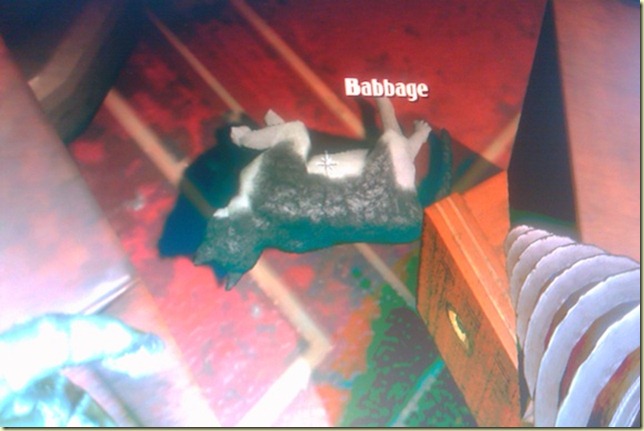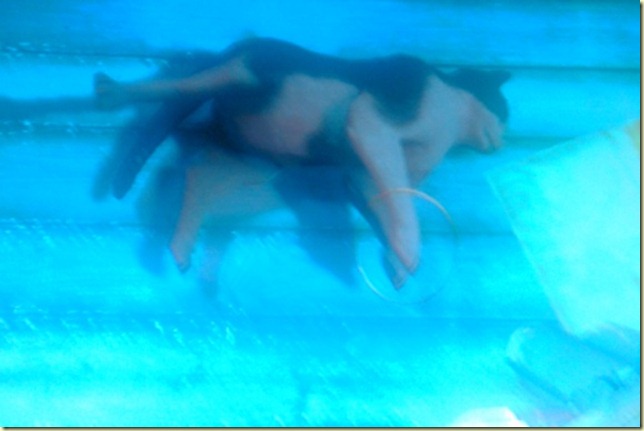Okay, if you follow this blog, you know that there is one specific dead cat populating both the original Bioshock and Bioshock 2.
No dogs, no other cats. Just one black & white kitty who can be discovered in corners all over Rapture. And who wears solely the designation “corpse” – if anything at all.
Well.
I was playing the Bioshock 2 DLC Minerva’s Den and I found the cat again.
AND THIS TIME IT HAS A NAME:

His name is Babbage!
Much later in the adventure, I found another cat.
I had already jumped through this hole in the floor before I noticed him, so you don't have a good view of the cat's body. But you can see that he, too, has a name.
A DIFFERENT name!

This cat is named Turing!
Now, I immediately recognized that as a reference to famous British codebreaker, computer scientist, mathematician, and father of artificial intelligence Alan Turing.
So now we know the theme of the cat names in Minerva's Den. But...
HOW MANY CATS ARE THERE?
If you have spotted a named cat in Bioshock, please comment here with the name. It would be interesting to collect them all.
And we still don't know whose idea these cats were.
Yes, the Bioshock cat mystery deepens….





